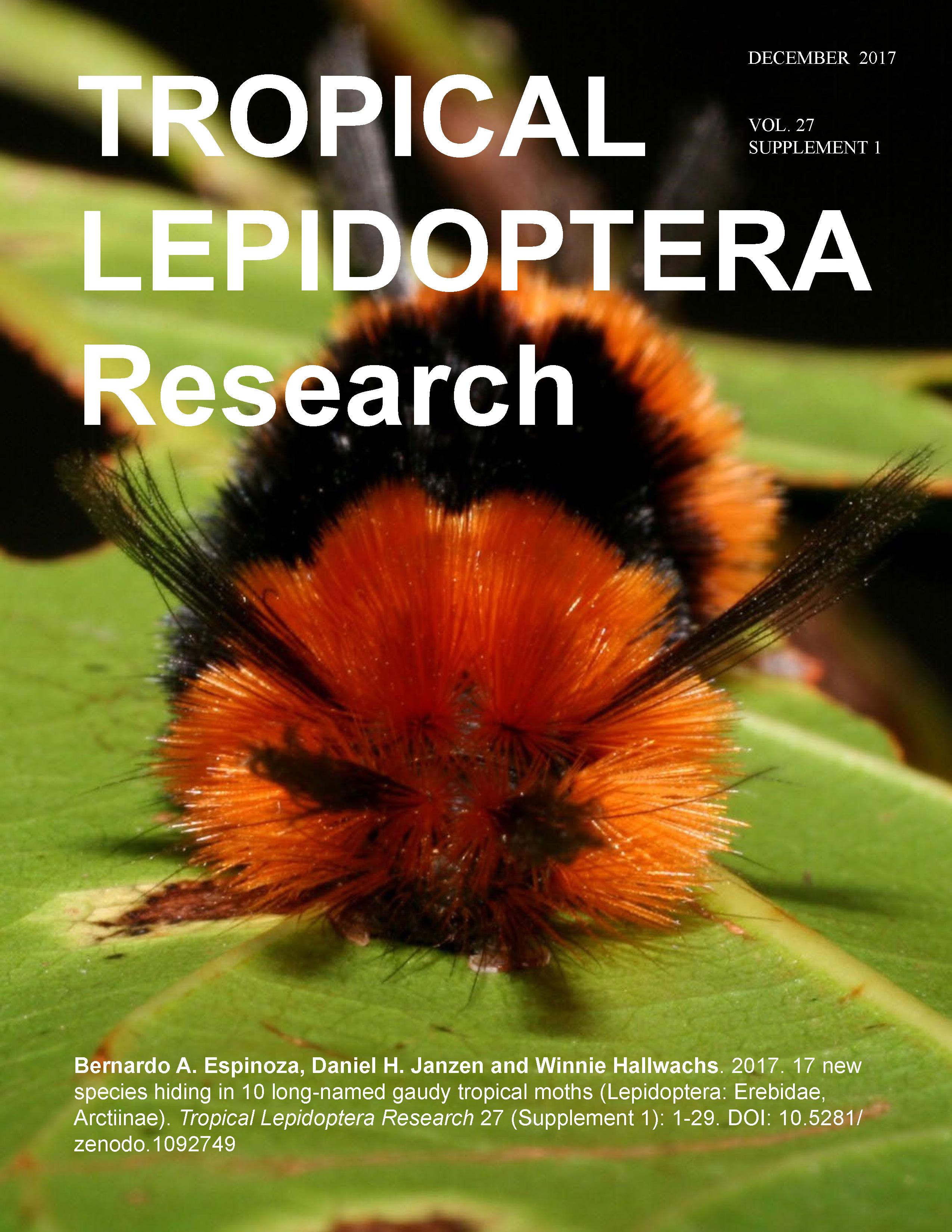17 new species hiding in 10 long-named gaudy tropical moths (Lepidoptera: Erebidae, Arctiinae)
Keywords:
Moths, caterpillars, biodiversity inventoryAbstract
Neotropical arctiine moths (Erebidae) are generally brilliantly colored and therefore believed to be aposematic, in light of the of the frequent occurrence of glands that produce unpleasant chemicals as a defense mechanism when attacked, and many species were described by the earliest taxonomists. They therefore hardly seem good candidates for the discovery of cryptic species. However, when we DNA barcoded all Arctiinae found to date by the Lepidoptera inventory of Área de Conservación Guanacaste (ACG) in northwestern Costa Rica, 17 additional new species were found in 9 genera, as follows (all authored by Espinoza): Munona carolinepalmerae, sp. n., Munona robpuschendorfi, sp. n., Amaxia rocioecheverriae, sp. n., Amaxia josealfredohernandezi, sp. n., Amaxia alejandraloriae, sp. n., Amaxia brendacasperae, sp. n., Baritius angelagonzalezae, sp. n., Baritius maribellealvarezae, sp. n., Baritius martajimenezae, sp. n., Pareuchaetes abbysmutnyae, sp. n., Pareuchaetes georgegormani, sp. n., Symphlebia janecheverriae, sp. n., Kirrostola stevearonsoni, sp. n., Pelochyta timrichi, sp. n., Pelochyta amyeaderae, sp. n., Ochrodota melaniamunozae, sp. n., Turuptiana annesmithae, sp. n. These species were uncovered within 10 putative species collectively bearing species names for about 240 years. We recognize and describe these new species as part of an effort to provide greater taxonomic resolution to facilitate ecological, behavioral and microgeographic analyses of these conspicuous animals in support of their conservation in the wild.Downloads
Published
2017-12-19

